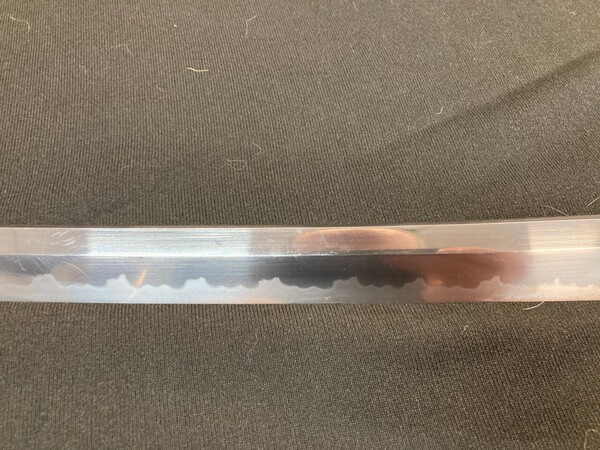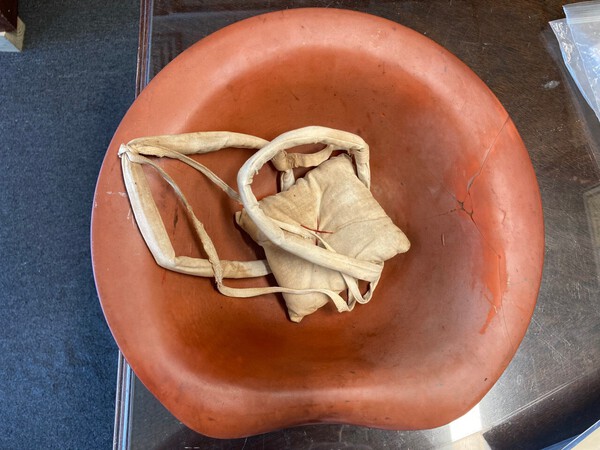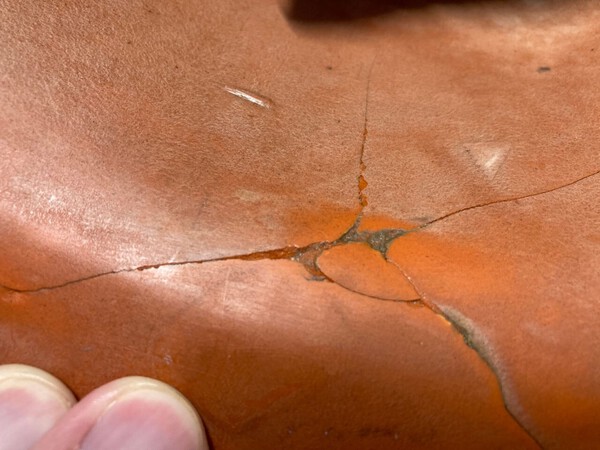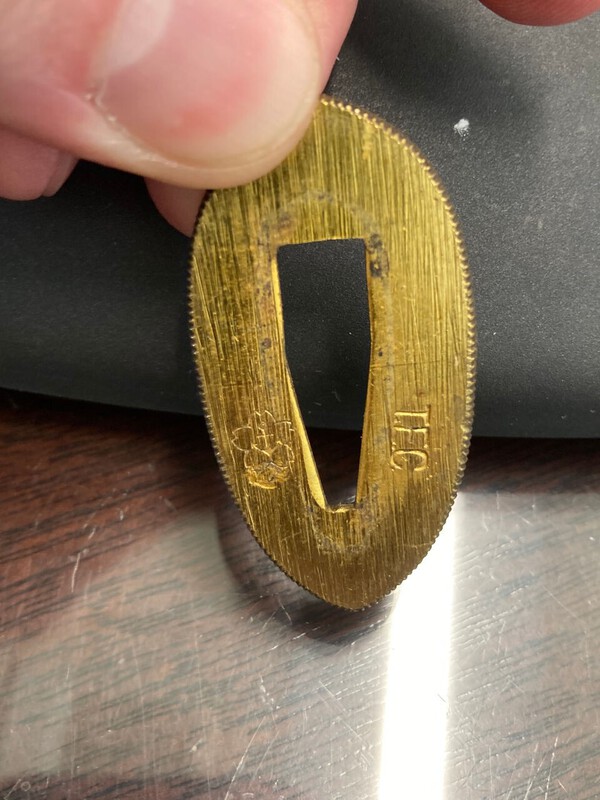
tbonesullivan
Members-
Posts
403 -
Joined
-
Last visited
Content Type
Profiles
Forums
Events
Store
Downloads
Gallery
Everything posted by tbonesullivan
-
Well, that WAS the plan, but the current state of things makes it almost impossible to get it in for a SHINSA. I'm in the United States, which means that getting stuff in and out is very difficult, and many simply won't deal with it. I also doubt that the NTHK will be doing any on site SHINSA examinations either in San Francisco or Orlando.
-
Ooops, sorry I was away for a bit. nagasa is 25 inches / 63.5cm right now, but looking at the tang it does look like originally it was longer. It's got IHORI mune. Blade shape is pretty standard. Not that I know of. I don't know anything about the history of the blade prior to handling it unfortunately. I have no idea how the tang got the way it is.
-
I've been told that the blade is very old, and it is definitely relatively thin, assume from having been polished several times. The tang is definitely missing a lot of material, and the KUNI character is quite faint. The curve of the blade is also a bit different than I see on the usual WWII era swords I deal with. Is there any way to tell what general era of swordmaking it is from from these pictures? Thanks in advance!
-
This is the blade from a Type 98 Shin-Gunt, which looks to be gendaito. This is a maker that I definitely haven't seen before, but I'm pretty sure the signature is 天 地 正 恒 作 - AMACHI MASATSUNE SAKU. The writing is quite stylized, and there are additional kanji on the other side of the tang, which I thought was a date, but it's not in a format I'm used to seeing. I thought maybe it was a Zodiac date, but I don't recognize the first and last kanji on the back. Any help would be greatly appreciated. I also got some (bad) pictures of the hamon, which is somewhere between HAKO and and YAHAZU.
-
This came from an estate sale as kind of a freebie, as it was damaged and glued back together. Looking at it, I'm not sure it's even a genuine article. I've dealt with a lot of different Jingasa helmets, and while I don't really get that deep into them, this has lots of red flags, and I've seen helmets like this before at shows, but they looked brand new and I stayed away. I can see some of the cross section, and it's uniform, looking like it's made from melamine or some other type of molded plastic. I'm used to seeing layers of paper, maybe with metal, and then layers of urushi lacquer. It doesn't look new at all, but it definitely doesn't look real. It also has molding artifacts around the outside rim, and these little bumps on the inside, just like the "brand new" looking ones I see. Does anyone know the story on these? This one looks like it was aged, or maybe it is decades old, but I doubt it is any type of "real" jingasa.
-
Oh wow thanks! I guess they chose to use a different kanji for the second character. I see them in the Hikosaburo rankings as 貞次 but in the 1939 Seki Tanrensho Booklet they are 貞継. Which book is that information from? I really need to purchase a copy, hopefully digitally so I can easily copy and past the information.
-
It's been a while since I haven't been able to find really anything on a blade. I'm having trouble with the second to last character before SAKU, but I'm also questioning the one before that. Basically the name of the smith. The other kanji I think I have gotten correct. Any help would be greatly appreciated! Signature: 関 住 髙 井 貞 ? 作 - SEKI JU TAKAI SADA ???? SAKU I noticed that this uses the 髙 variant of 高 (TAKA), which is supposed to usually be used in names. Dated on tang: 昭 和 十 八 年 八 月 吉 日 - Showa 18 (1943) 8th Month (August) Lucky Day
-
Finally got back to some swords that have been around for a bit, now that the Christmas rush at work is over. Have a VERY nice Kai-Gunto by TSUKAHARA KANETSUGU. It's a SEKI marked blade, signed 濃 州 住 塚 原 兼 次 謹 作 - NOSHU JU TSUKAHARA KANETSUGU KIN SAKU Haven't gotten any chance to take full pictures, but we found a very interesting marking on one of the seppa, which I have not seen before. It looks like TFC and a cherry blossom with an anchor. Does anyone know what these stand for?
-
Definitely looks like it was once much longer, broke, and then was used quite a bit, or just got rusty and was cleaned a bunch of times. It has led a hard life, and probably best left as is, as that is part of its history.
-
-
I have seen plenty of very old patinated blades, and plenty of WWII blades that barely have any oxidation. This just didn't look right. I can't see any traces of Yasurime, and the edges are not really straight. The Nakago-Jiri in particular just doesn't look shaped right.
-
This looks to be an old Naginata blade that was turned into a wakizashi, and the blade does look old and used, and like a lot of out of polish blades I have seen before. The characters on the tang are not ones I recognize at all. The fittings for the blade are also made from laminated wood, definitely not what I am used to seeing. The "duck" ornaments on the handle are definitely interesting.
-
I've seen two like this. Both were late war Showato dated during late 1944. Same "chippy" style markings on the tang as well. How does the rest of the blade look? Looks like the tang and habaki have some oxidation. 正 則 MASANORI was listed in the Seki Tanrensho Booklet printed in 1939. Real name 野呂 栄吉 - Noro Eikichi?? Kanji for the date are 昭 和 十 九 年 八 月 - Showa Era 19th Year, 8th Month August 1944.
-
What shape of Hamon is on this Blade? HAKO?
tbonesullivan replied to tbonesullivan's topic in Nihonto
That is what I was leaning towards, though there are the little 'arrow' shapes in the very tips of the groups of three. It's definitely an interesting hamon, that's for sure. -
Can someone help me to understand,please ?
tbonesullivan replied to PatB's topic in Translation Assistance
Do you have any better pictures of the MEI on the tang? It's not quite clear and the photo is relatively low resolution. -
Yeah, well I also got it wrong. I haven't seen 元 used for "first year" before, and I haven't seen winter referred to in that way before. Of course I've only dealt with maybe a handful of zodiac dated swords, and they were almost always Showa era blades.
-
The last kanji I think is 中 which means "middle" or "central", so maybe the middle of the year? I assume that the two kanji before that are Zodiac markings, but I don't recognize the first one, unless that is 火, for Fire, though that is not the usual character used in the zodiac dates I have seen. The second looks to be 寅 Tora / Tiger. I could be totally off however. If it does read 慶應火寅, that would be for the zodiac year from 15 February 1866 to 4 February 1867. That would fit in with the era correctly, which only lasted May 1, 1865 to October 23, 1868.



































